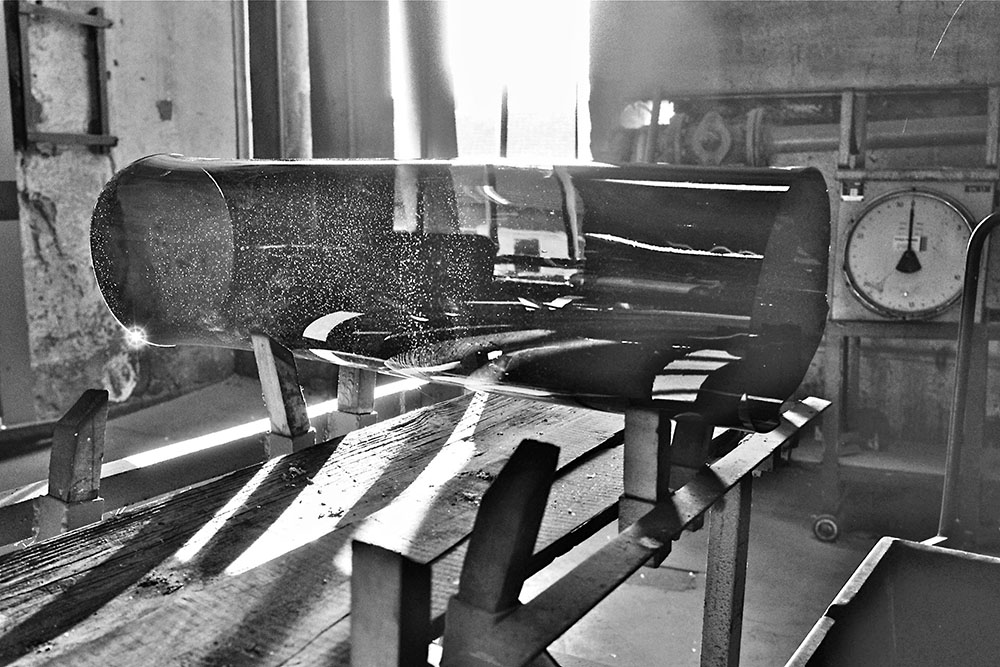From around 500-600, the first cylinder sheet glass was produced in Europe and the method were improved upon in the centuries that followed. A book written in 1122 by the German monk Theophilus Presbyter (ca. 1070-1125) mentions the manufacturing of cylinder glass
To manufacture cylinder glass, the glassblower blew an elongated bubble. The bubble's end was then melted off in the glass pit, creating an aperture. Whilst spinning the glass, the glassblower used a wet tool to open the aperture to the largest diameter of the cylinder. The opening was pinched in the middle and an iron pontil set in the middle with molten glass.
The blowpipe was then cracked off, and the process was repeated on the side from which it was removed to create a large opening. After being straightened, the glass was brought into the shape of a bottlelike cylinder. At that point it was either cut open, or cooled and slit open with a red-hot iron. Finally, the glass was softened in the oven and opened out onto sheets, hence the alternate name "cylinder sheet glass".
Window glass was made from cylinder glass in the early Middle Ages, but as the process was expensive as well as time-intensive, it was typically reserved for prestige buildings such as palaces and churches. The cylinder glass method was widespread primarily in Lorraine, Germany, Bohemia and Venice. Denmark's oldest known window glass is from the 12th century.
Cylinder glass production spread to most of Europe during the 1100s and 1200s, and the technique was used to produce flat glass in Sussex, England in 1226. By the 1400s, the technique had undergone changes; to manufacture cylinder glass, the glazier swung the blowpipe over a large pit, which made it possible to produce glass with significantly larger dimensions than before. The resulting cylinder was then slit open and rolled and flattened on a plate made of fireproof clay, or a chamotte plate.
Prior to the introduction of glass blowing machines in the 19th century, windowpanes seldom exceeded 60 x 125 cm (about 23 x 49 inches). The glass that this production technique yielded was not perfectly flat, and visual distortions could occur.

